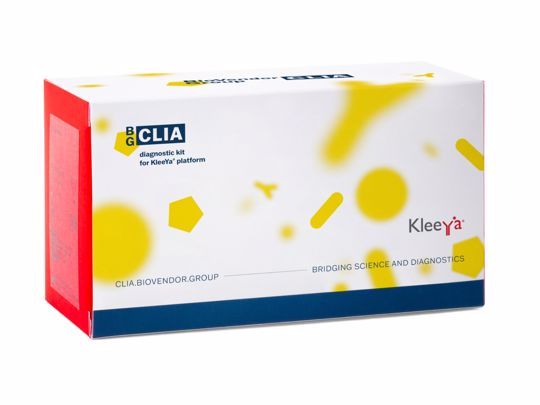CLIA Uromodulin
The chemiluminescence assay is intended for the diagnosis of kidney disease using uromodulin determination in human serum in the general population.
The chemiluminescence assay is intended for the diagnosis of kidney disease using uromodulin determination in human serum in the general population.
| Catalog Number: | CL-UMOD050 |
|---|---|
| Size: | 50 tests |
| Regulatory status: | CE IVD |
| Clinical topic: | Renal Diseases |

Chronic kidney disease (CKD) represents a serious health problem affecting more than 10% of the global population. It often progresses silently, without obvious symptoms until advanced stages. Early detection is crucial for slowing disease progression and preventing severe complications such as the need for dialysis or transplantation.
In clinical practice, although we have reliable indicators of glomerular filtration (e.g., creatinine or eGFR), we lack a marker for renal tubular function. Kidney damage often begins at the tubular level, not the glomeruli. If we monitor only glomerular function, the problem may be detected only in later stages.
Uromodulin (UMOD) is a specific protein produced exclusively in the kidneys, whose concentration sensitively reflects the functional integrity of the tubular apparatus and enables detection of kidney damage even before eGFR declines.
Main advantages of uromodulin:
UMOD, also known as Tamm-Horsfall protein, is produced exclusively by epithelial cells of the renal tubules. It is released into both urine and bloodstream, with serum levels better reflecting the current state of the kidneys than urinary levels.
A decrease in UMOD concentration below a defined threshold signals reduced kidney function and can reveal CKD risk earlier than changes in traditional parameters such as creatinine.
CLIA Uromodulin can be quantified in serum with results available within 20 minutes. Due to its high specificity and sensitivity, it represents a reliable tool for prevention and early detection of kidney disease.
| Assay time | 20 min |
| Assay stability | 30 days on board stability / In use stability until the expiration date at storage temperature 2-8 °C |
| Sample matrix | Serum |
| Sample volume | 10 µL |
| Measuring range | 15 – 800 ng/ml |
| Assay/kit content | Wash buffer, Anchor tips, Cuvettes, Dispense cartridge |
| Complementary products | Anchor® Tips, Stackable Cuvette, KleeYa Trigger Pack, KleeYa Wash buffer |
| Note | The kits are CE-IVD certified and intended for professional use. |